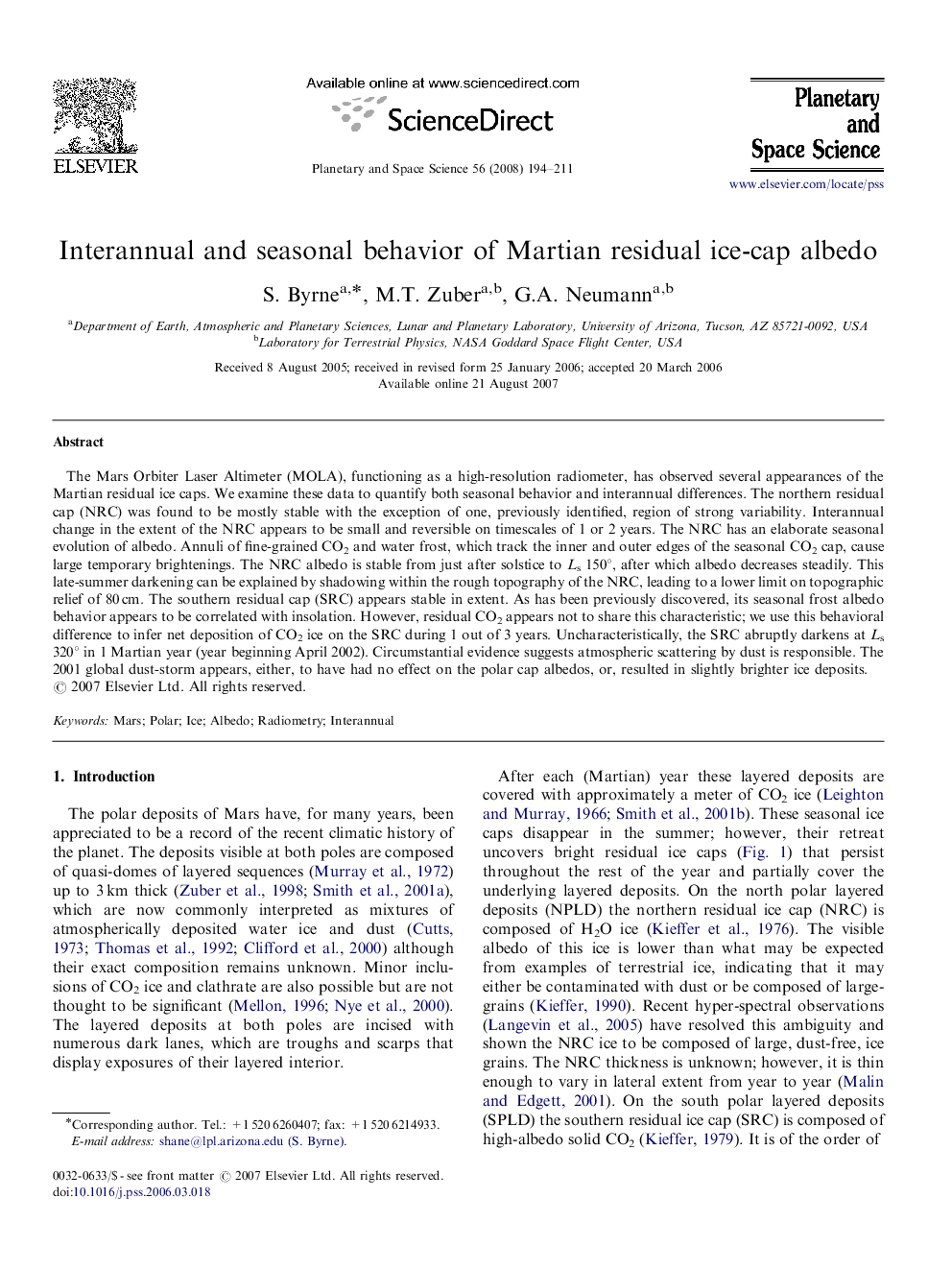| Article ID | Journal | Published Year | Pages | File Type |
|---|---|---|---|---|
| 1782812 | Planetary and Space Science | 2008 | 18 Pages |
The Mars Orbiter Laser Altimeter (MOLA), functioning as a high-resolution radiometer, has observed several appearances of the Martian residual ice caps. We examine these data to quantify both seasonal behavior and interannual differences. The northern residual cap (NRC) was found to be mostly stable with the exception of one, previously identified, region of strong variability. Interannual change in the extent of the NRC appears to be small and reversible on timescales of 1 or 2 years. The NRC has an elaborate seasonal evolution of albedo. Annuli of fine-grained CO2 and water frost, which track the inner and outer edges of the seasonal CO2 cap, cause large temporary brightenings. The NRC albedo is stable from just after solstice to Ls 150°, after which albedo decreases steadily. This late-summer darkening can be explained by shadowing within the rough topography of the NRC, leading to a lower limit on topographic relief of 80 cm. The southern residual cap (SRC) appears stable in extent. As has been previously discovered, its seasonal frost albedo behavior appears to be correlated with insolation. However, residual CO2 appears not to share this characteristic; we use this behavioral difference to infer net deposition of CO2 ice on the SRC during 1 out of 3 years. Uncharacteristically, the SRC abruptly darkens at Ls 320° in 1 Martian year (year beginning April 2002). Circumstantial evidence suggests atmospheric scattering by dust is responsible. The 2001 global dust-storm appears, either, to have had no effect on the polar cap albedos, or, resulted in slightly brighter ice deposits.
